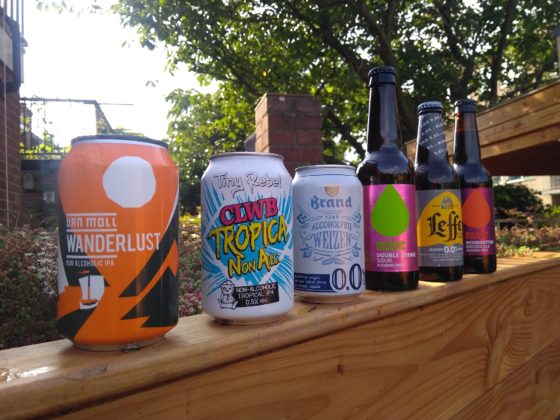Inburgering with DutchNews.nl: 10 key facts about beer


With the nights drawing in, what better thing to do follow the DutchNews.nl inburgering course?
Lesson 26: Beer
Beer brewing in the Netherlands dates back to the 9th century, though craft beer has recently experienced a considerable resurgence in the country. Ever since Heineken won the gold medal for its pilsner at the World’s Fair in 1889, the Dutch have been known for that brewery and style, but brewing in the Netherlands is much more than that.
Beer was not more common than water
It’s commonly said that beer was more popular than water in Medieval Europe and the reason often given is that the water was contaminated and beer, which had to be be boiled during the brewing process, was thus cleaner. While this is a great parable, it isn’t true. It is true that people living in Medieval Europe, including the Netherlands, did consume a considerable amount of beer. Beer was inexpensive (unlike wine, which was for the rich) and significantly lower in alcohol than what we consume today. It also had an advantage over water. Namely, it contained calories. For the average Medieval labourer, it was akin to cola.
The oldest brewery
Brand is the oldest continuously operating Dutch brewery. It has been in operating since 1340, though it wasn’t purchased by the Brand family until 1871, when the current owner Jan Hendrik Hubert L’Ortye sold the brewery to Frederik Edmond Brand. The original brewery was part of the charter of Wijlre which gave the city aldermen the sole right to appoint a city brewer.
The big brewers
Brewers in the Netherlands produce 2,400 million litres of beer per year, mostly by the large macro breweries like Heineken, Amstel and Grolsch. Most of the beer produced in the Netherlands, however, doesn’t get consumed by the average citizen. The Netherlands exports nearly 50% (1,300 million litres) of the beer it produces, a larger proportion than any other brewing nation.
Craft Brewers
Not all the beer produced or consumed in the country comes from one of the big breweries. New craft and microbreweries have popped up all over the country. Brouwerij ‘t IJ in Amsterdam is the oldest craft brewery, which was started in 1985, during a period of blossoming craft beer. Home brewers, sick of the beer brewed by the large breweries, began to open their own, smaller operations, leading to a resurgence of the industry. Now the industry has seen a resurgence and there are over 900 small breweries operating commercially in the country.
Trappist
The Order of Cistercians of the Strict Observance are more commonly known as Trappists or Trappist monks. They are members of a religious order founded in France who produce goods to support the monastery, including cheese, wool and, of course, beer. You may be familiar with some of them, Westmalle, Orval and, arguably, the best beer in the world, the Westvlerten 12. Though most of the trappist breweries are located in Belgium, two are located in the Netherlands: Brouwerij de Koningshoeven, more commonly know as La Trappe and and Zundert, which was introduced in 2013.
How much beer do the Dutch drink?
The Dutch drink, on average, 79.3 litres of beer per person per year, ranking them 13th in the world in terms of beer consumption. The largest portion of that (nearly 95%) is the pilsner style, popularised by Heineken and others.
-Je
If you walk into a bar in the Netherlands and order a biertje (little beer) the server will, in fact, bring you a beer. Likely their house beer (whichever major brewery they have a contract with.) That beer will probably be served in a .20l fluitje (little whistle) glass. Or it may be served in a vaasje (little vase) which can come in a variety of sizes, most commonly .33l. Unlike the English and the Americans, the Dutch don’t commonly serve pints. And unlike the Belgians, they don’t have a special glass for every beer.
Bruin Cafes
Your typical bruin cafe (brown cafe) is aptly named. The wooden floors, furniture and walls (either from wood paneling or years of smoking) will all be some shade of brown. This your typical Dutch haunt. There are over 500 in Amsterdam alone which range from upscale to jazz cafes. You can order a normal beer or perhaps some bitterballen. Don’t forget to pay your bill at the end of the evening, the bartender will normally keep track of your drinks on a scrap of paper behind the bar.
Beer proverbs
There are many sayings involving beer but most are never used and frankly we think that beer enthusiasts make them up as they go along. The best-known are Wanneer het bier is in de man dan is de wijsheid in de kan which roughly means that you mustn’t expect a person with a belly full of beer to explain the theory of relativity with any clarity. Another one is bier na wijn geeft venijn, wijn na bier geeft plezier. It means drinking beer after wine will give you a headache whereas drinking wine after beer will make you jolly and hangover-free. Your choice.
Next lesson: Sinterklaas, the ultimate guide
Thank you for donating to DutchNews.nl.
We could not provide the Dutch News service, and keep it free of charge, without the generous support of our readers. Your donations allow us to report on issues you tell us matter, and provide you with a summary of the most important Dutch news each day.
Make a donation